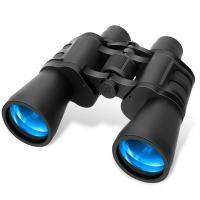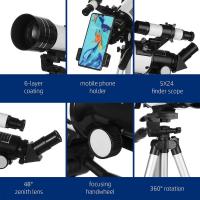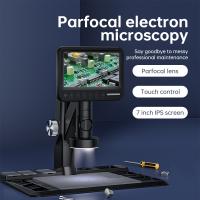Where Are Microscopes Used ?
Microscopes are used in various fields and industries for scientific research, medical diagnostics, and quality control. They are commonly used in biology and medicine to study cells, tissues, and microorganisms. Microscopes are also utilized in forensic science to analyze evidence such as hair, fibers, and fingerprints. In the field of materials science, microscopes are used to examine the structure and properties of materials at the microscopic level. Additionally, microscopes play a crucial role in the semiconductor industry for inspecting and analyzing tiny electronic components. They are also used in metallurgy, geology, environmental science, and many other disciplines where the observation and analysis of small-scale objects or structures are required.
1、 Biological research and medicine
Microscopes are widely used in biological research and medicine. They play a crucial role in studying and understanding the intricate details of living organisms at the cellular and molecular level. Microscopes enable scientists and medical professionals to observe and analyze various biological structures, processes, and interactions, leading to advancements in our understanding of diseases, development of new treatments, and improvements in healthcare.
In biological research, microscopes are used to study cells, tissues, and organisms. They allow scientists to visualize and examine the structure and function of cells, including their organelles, proteins, and genetic material. Microscopes also aid in studying cellular processes such as mitosis, meiosis, and cellular signaling. By observing these processes, researchers can gain insights into normal cell function as well as the mechanisms underlying diseases.
In medicine, microscopes are essential tools for diagnosing and monitoring diseases. Pathologists use microscopes to examine tissue samples and identify abnormalities, such as cancerous cells or infectious agents. Microscopes also enable medical professionals to analyze blood samples, identifying pathogens or abnormalities in blood cells. Additionally, microscopes are used in surgical procedures, allowing surgeons to visualize and manipulate tissues with precision.
The latest point of view in the use of microscopes in biological research and medicine is the integration of advanced imaging techniques. For instance, confocal microscopy allows for the visualization of three-dimensional structures within cells and tissues, providing a more detailed understanding of their organization and function. Super-resolution microscopy techniques, such as stimulated emission depletion (STED) microscopy and structured illumination microscopy (SIM), enable researchers to surpass the diffraction limit of light, achieving higher resolution and revealing finer details of cellular structures. These advancements in microscopy have revolutionized the field, allowing scientists and medical professionals to explore the intricate world of biology with unprecedented clarity and precision.
In conclusion, microscopes are indispensable tools in biological research and medicine. They enable scientists and medical professionals to study and understand the complexities of living organisms, leading to advancements in disease diagnosis, treatment, and overall healthcare. The integration of advanced imaging techniques further enhances the capabilities of microscopes, providing a deeper understanding of biological structures and processes.
2、 Material science and nanotechnology
Microscopes are used in various fields, including material science and nanotechnology. In material science, microscopes play a crucial role in studying the structure, composition, and properties of different materials at the microscopic level. They are used to analyze the crystal structure, grain boundaries, defects, and surface morphology of materials. By examining materials under a microscope, scientists can gain insights into their behavior, performance, and potential applications.
In nanotechnology, microscopes are indispensable tools for visualizing and manipulating nanoscale objects. Nanotechnology deals with materials and structures at the nanometer scale, which is about 1 to 100 nanometers. Microscopes such as scanning electron microscopes (SEM) and transmission electron microscopes (TEM) enable researchers to observe and characterize nanomaterials with high resolution. These microscopes can provide detailed information about the size, shape, and arrangement of nanoparticles, nanowires, and other nanostructures.
Moreover, microscopes are used in nanotechnology to investigate the properties and behavior of nanomaterials. For example, atomic force microscopy (AFM) allows scientists to measure the forces between atoms and molecules, enabling the study of surface properties, mechanical properties, and interactions at the nanoscale. This information is crucial for designing and developing new materials with enhanced properties for various applications, such as electronics, energy storage, and medicine.
In recent years, there has been a growing interest in using microscopes for in-situ and real-time imaging of materials and processes. This involves observing materials under different environmental conditions, such as high temperatures, high pressures, or in the presence of gases or liquids. In-situ microscopy provides valuable insights into the dynamic behavior of materials, allowing scientists to understand their response to external stimuli and optimize their performance.
Overall, microscopes are essential tools in material science and nanotechnology, enabling researchers to explore and manipulate materials at the microscopic and nanoscale levels. They continue to advance our understanding of materials and drive innovation in various fields.
3、 Forensic analysis and criminal investigations
Microscopes are extensively used in forensic analysis and criminal investigations. These powerful instruments play a crucial role in examining evidence, identifying substances, and providing valuable insights into criminal cases.
One of the primary applications of microscopes in forensic analysis is the examination of trace evidence. This includes analyzing fibers, hair, glass fragments, paint chips, and gunshot residue. Microscopes allow forensic scientists to compare these samples with known standards, helping to establish links between suspects, victims, and crime scenes. Additionally, microscopes are used to study tool marks, such as those left by a specific weapon, which can aid in identifying the perpetrator.
Microscopic analysis is also vital in the field of forensic pathology. Autopsies often involve the use of microscopes to examine tissues and organs at a cellular level, helping to determine the cause and manner of death. Microscopic examination of bloodstains, fingerprints, and other biological evidence is also crucial in DNA profiling, which has revolutionized criminal investigations in recent years.
Moreover, microscopes are employed in the analysis of questioned documents, such as forged signatures or altered documents. By examining the ink, paper fibers, and other microscopic features, forensic document examiners can determine the authenticity of a document and provide evidence in court.
In recent years, advancements in microscopy technology have further enhanced its applications in forensic analysis. For example, scanning electron microscopes (SEM) and atomic force microscopes (AFM) allow for high-resolution imaging and analysis of surfaces, enabling the detection of even smaller traces of evidence. Additionally, the development of portable and handheld microscopes has made it easier to conduct on-site investigations and gather real-time information.
In conclusion, microscopes are indispensable tools in forensic analysis and criminal investigations. They enable forensic scientists to examine trace evidence, analyze biological samples, study tool marks, and authenticate documents. With the continuous advancements in microscopy technology, these instruments are becoming even more powerful and versatile, aiding in the pursuit of justice.
4、 Environmental science and pollution monitoring
Microscopes are widely used in various fields, including environmental science and pollution monitoring. These powerful instruments allow scientists to observe and analyze microscopic organisms, particles, and pollutants that are crucial for understanding and managing environmental issues.
In environmental science, microscopes are used to study the biodiversity and ecology of different ecosystems. They enable scientists to examine and identify microorganisms such as bacteria, fungi, and algae, which play vital roles in nutrient cycling, decomposition, and pollution remediation. By studying these microorganisms, researchers can better understand the health and functioning of ecosystems and develop strategies for conservation and restoration.
Microscopes are also essential in pollution monitoring. They enable scientists to analyze air, water, and soil samples for the presence of pollutants such as heavy metals, microplastics, and harmful chemicals. By examining these samples under a microscope, researchers can determine the type and concentration of pollutants, assess their impact on the environment and human health, and develop effective pollution control measures.
Moreover, microscopes are used in studying the effects of pollution on organisms. Scientists can observe the physiological and cellular changes in plants, animals, and microorganisms exposed to pollutants. This helps in understanding the mechanisms of toxicity and developing strategies for pollution mitigation.
In recent years, there has been an increasing focus on the use of advanced microscopy techniques in environmental science and pollution monitoring. For example, confocal microscopy allows for three-dimensional imaging of samples, providing more detailed information about the structure and interactions of microorganisms and pollutants. Additionally, scanning electron microscopy and transmission electron microscopy enable scientists to visualize nanoparticles and ultrafine particles, which are of particular concern in pollution monitoring.
In conclusion, microscopes are indispensable tools in environmental science and pollution monitoring. They enable scientists to study microorganisms, analyze pollutants, and understand the impacts of pollution on organisms and ecosystems. With the advancements in microscopy techniques, researchers can gain deeper insights into environmental issues and develop more effective strategies for environmental management and pollution control.























There are no comments for this blog.